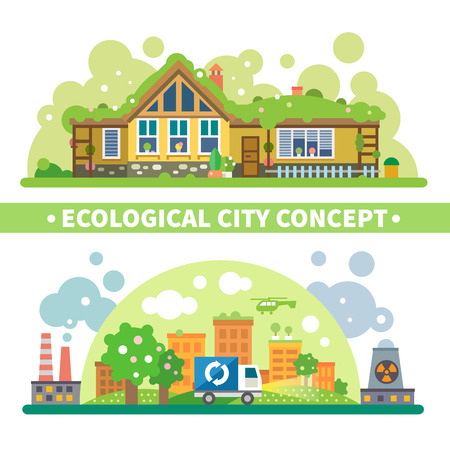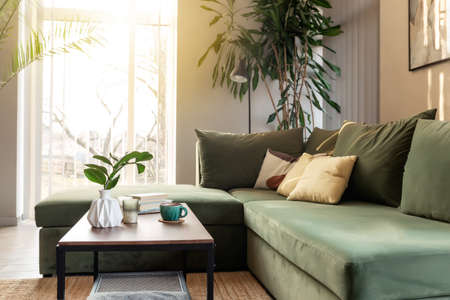Introduction to Sustainable Conservatory Design
Conservatories have long held a cherished place within the British home, offering a seamless connection between indoor living spaces and the natural world outside. Over the centuries, these glass havens have evolved from ornate Victorian structures filled with exotic plants to sleek, modern extensions that enhance everyday living. As we move further into the 21st century, the focus of conservatory design in the UK is shifting towards sustainability and environmental stewardship. With climate change and resource conservation at the forefront of contemporary concerns, British homeowners are increasingly seeking eco-friendly solutions that honour both tradition and innovation. This new wave of sustainable conservatory design not only minimises environmental impact but also aligns with a growing appreciation for natural materials, energy efficiency, and biophilic principles. By embracing these values, today’s conservatories provide stylish sanctuaries that elevate modern living while nurturing the planet—a beautiful marriage of heritage and forward-thinking design.
Materials and Construction: Eco-Friendly Choices
When designing a sustainable conservatory for modern British living, the selection of materials is paramount. The synergy between environmental consciousness and architectural heritage informs every choice, ensuring that new additions harmonise with both the local climate and the historic character of UK homes.
Responsibly Sourced Timber
Timber remains a quintessential element in British architecture, admired for its warmth and versatility. For eco-friendly conservatories, opting for FSC-certified or PEFC-certified wood guarantees that forests are managed responsibly, supporting biodiversity and reducing carbon footprints. These timbers, such as oak or larch, are not only durable but also age gracefully, blending seamlessly with both period properties and contemporary extensions.
High-Performance Glazing
The British climate demands thoughtful consideration in glazing choices. High-performance glass options now offer excellent insulation, minimising heat loss during colder months while reducing overheating in summer. Technologies like low-emissivity (Low-E) coatings and argon-filled double or triple glazing ensure energy efficiency without compromising on light quality or views to the garden.
| Glazing Type | Key Benefit | Best Use Case |
|---|---|---|
| Double Glazing | Balanced insulation & cost-effective | Traditional homes seeking upgrades |
| Triple Glazing | Superior thermal performance | New-builds or high-exposure areas |
| Low-E Glass | Reflects heat back indoors | All climates, especially colder regions |
Recycled and Reclaimed Materials
Sustainability extends beyond sourcing new materials; it also means breathing new life into existing resources. Incorporating recycled aluminium frames or reclaimed bricks not only reduces waste but also pays homage to Britain’s rich architectural past. These elements provide unique character and tactile interest, ensuring each conservatory tells its own story while contributing positively to the environment.
The British Approach: Harmony with Heritage
Ultimately, selecting eco-friendly materials is about creating spaces that respect both the planet and the local context. By combining responsibly sourced timber, advanced glazing technologies, and upcycled materials, homeowners can craft conservatories that stand as exemplars of sustainability—rooted in tradition yet designed for the future.

3. Energy Efficiency and Smart Technology
In the pursuit of truly sustainable and eco-friendly conservatory designs for modern British homes, energy efficiency stands at the forefront. Modern conservatories are no longer mere sunrooms; they are dynamic spaces that harmonise with their environment while reducing carbon footprints. One of the most innovative approaches involves intelligent ventilation systems, which automatically regulate airflow based on interior and exterior temperatures. This not only maintains a comfortable climate year-round but also significantly cuts down on heating and cooling demands—a crucial consideration in the UK’s variable weather.
Solar panels are becoming an increasingly popular addition, seamlessly integrated into contemporary rooflines or as elegant awnings. These harness renewable energy to power lighting, underfloor heating, and even charging points for electric vehicles, reflecting a commitment to a greener lifestyle without compromising on style. For those seeking further refinement, triple-glazed windows and thermally broken frames offer superior insulation, preventing heat loss during chilly British winters while keeping interiors pleasantly cool in summer.
Smart technology has elevated conservatory living to new heights. Automated blinds, responsive to sunlight levels, protect delicate furnishings and control solar gain. Advanced climate control systems can be managed remotely via smartphones or voice assistants, ensuring your conservatory is always welcoming—no matter the season. When designed with local conditions in mind, these features not only enhance comfort but also promote long-term savings on energy bills, making modern conservatories both eco-conscious and economically sound.
4. Green Living: Incorporating Nature Indoors
Bringing the outside in is at the heart of sustainable conservatory design, especially when aiming to achieve a harmonious balance between modern living and the timeless beauty of British nature. By thoughtfully integrating native flora into your conservatory, you not only create a tranquil sanctuary but also champion biodiversity and wellbeing within your home.
Design Inspiration: Seamlessly Blending Indoor and Outdoor Living
Modern conservatories serve as transitional spaces, blurring the boundaries between garden and interior. Floor-to-ceiling glazing, bi-fold doors, and green roofs are all architectural elements that invite natural light and greenery inside. The use of tactile materials—such as reclaimed timber and natural stone—further echoes the textures of the surrounding landscape, fostering a continuous visual flow.
Quintessentially British Flora for Your Conservatory
Selecting plants native to the UK not only pays homage to local heritage but also ensures they thrive in our climate with minimal intervention. Consider incorporating:
| Plant | Benefits | Design Use |
|---|---|---|
| English Lavender | Calming scent, pollinator-friendly | Potted along window sills or hanging baskets |
| Ferns (e.g., Harts Tongue) | Purifies air, lush texture | Underplanting around seating areas |
| Wild Primrose | Seasonal colour, attracts butterflies | Low planters or terrariums |
| Ivy (Hedera helix) | Natural air filter, year-round greenery | Trailing from shelves or trellises |
| Foxglove | Tall vertical interest, supports bees | Feature plant in larger containers |
Enhancing Wellbeing and Biodiversity Indoors
The inclusion of living walls or modular planting systems can transform an ordinary conservatory into a vibrant indoor ecosystem. Not only do these installations provide visual delight, but they also promote mindfulness by connecting occupants with cycles of growth and seasonal change. Through careful selection and placement of native plants, your conservatory becomes both an oasis for relaxation and a haven for local wildlife—even within an urban setting.
5. Maximising Light and Space: Spatial Elegance
In the heart of contemporary British homes, the conservatory has evolved into more than a simple sunroom—it’s now a statement of spatial elegance and eco-conscious living. The hallmark of a modern, sustainable conservatory lies in its ability to harness natural daylight and create an open, flexible environment that echoes the calm sophistication of British design sensibilities.
Inviting Daylight with Intention
The strategic placement of glazing is crucial for maximising light without compromising thermal efficiency. Floor-to-ceiling glass panels, roof lanterns, and bi-fold doors allow daylight to flood interiors while framing picturesque garden views—a nod to the British love for nature. Opting for high-performance, low-emissivity glass reduces heat loss and prevents overheating, ensuring comfort throughout the changing seasons.
Flexible Layouts for Modern Living
Open-plan layouts are essential for creating a seamless transition between indoor and outdoor spaces. Modular furniture, sliding partitions, and built-in storage solutions enhance adaptability, allowing the conservatory to function as a tranquil reading nook, a vibrant entertaining space, or a serene workspace. This versatility reflects the practical yet refined approach intrinsic to British interior aesthetics.
Sustainable Shading Solutions
Contemporary conservatories incorporate eco-friendly shading to regulate sunlight and improve energy performance. Consider automated blinds crafted from recycled fabrics or timber louvres sourced from sustainably managed forests—both offer adjustable privacy and reduce reliance on artificial cooling. Living green walls or climbing plants provide natural shade while contributing to air purification, aligning perfectly with Britain’s commitment to green living.
Ultimately, maximising light and space within a conservatory is about achieving harmony between architectural innovation and environmental mindfulness. By thoughtfully integrating daylight strategies, flexible configurations, and sustainable shading, homeowners can create luminous sanctuaries that exemplify modern British spatial elegance.
6. Local Craftsmanship and Cultural Context
The soul of a truly sustainable conservatory lies not only in its materials or energy efficiency, but also in the hands and heritage that shape it. Across the UK, there is a renewed appreciation for British artisans whose skills have been honed over generations. Their expertise in traditional construction techniques brings an unmistakable sense of authenticity and quality to modern eco-friendly conservatories.
Celebrating British Artisanship
Working with local craftspeople supports regional economies and reduces the carbon footprint associated with transporting materials and labour from afar. British joiners, stonemasons, and metalworkers are adept at blending age-old methods—such as mortise and tenon joints or hand-forged ironwork—with contemporary sustainable practices. This marriage of old and new ensures that each conservatory feels rooted in place while embracing forward-thinking design.
Tradition Meets Innovation
Incorporating local building traditions does not mean sacrificing innovation. On the contrary, regionally inspired design nuances—be it Cotswold stone bases, red-brick Victorian detailing, or timber frames sourced from responsibly managed British forests—add character while honouring environmental commitments. These elements allow homeowners to create spaces that reflect both their personal style and the architectural vernacular of their surroundings.
A Sense of Place
Eco-friendly conservatories that draw upon local culture provide more than just shelter; they become living testaments to community identity. Whether through the subtle curve of a Sussex oak beam or stained glass crafted by a Cornish artist, these details tell a story of place, pride, and sustainability. By investing in local craftsmanship, modern conservatories are transformed into unique sanctuaries that respect both the environment and the cultural landscape they inhabit.
7. Practical Tips and Future Trends
Actionable Steps for a Greener Conservatory
For British homeowners wishing to embark on a sustainable conservatory journey, practical action begins with small yet meaningful choices. Firstly, consider retrofitting your existing space with high-performance glazing and thermal blinds, which make a dramatic difference to year-round comfort and energy usage. Opting for responsibly sourced timber or recycled aluminium frames ensures the structure is both durable and environmentally sound. Integrate solar shading and natural ventilation to balance the temperature naturally, reducing reliance on artificial cooling or heating.
Everyday Habits that Make an Impact
Maintain your eco-friendly conservatory by choosing plant species that thrive in local conditions, requiring less water and attention. Install rainwater harvesting systems to nourish your plants, and select low-VOC paints and finishes for interior décor. When it comes to furnishing, upcycle vintage pieces or seek out local artisans who use reclaimed materials—this not only reduces carbon footprint but also infuses your conservatory with unique British charm.
Emerging Trends Shaping the Future
The future of sustainable conservatories in the UK is bright, blending cutting-edge technology with timeless design principles. Look out for innovations such as smart glass that tints automatically according to sunlight levels, or living roofs that support biodiversity while improving insulation. Biophilic design is gaining traction, weaving nature into every aspect of the conservatory experience—from green walls to integrated edible gardens. Modular construction methods are also rising in popularity, allowing homeowners flexibility in adapting their spaces as needs evolve.
Urban and Rural Adaptations
In bustling city centres, compact conservatories are maximising vertical space with suspended planters and green facades, creating tranquil retreats even in limited footprints. In rural settings, larger eco-conservatories are embracing passive solar orientation and off-grid power solutions, providing self-sufficiency and seamless connection to the landscape. The unifying theme across Britain is an ethos of mindful stewardship—every choice, from material selection to daily use, contributing to a legacy of sustainability for generations to come.

